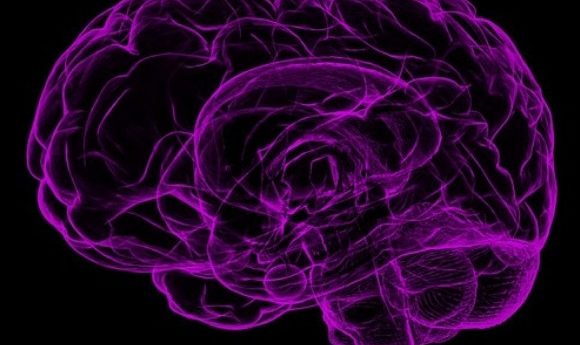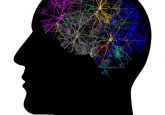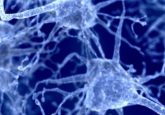Linking viruses and Alzheimer’s disease

Scientists have been linking bacteria and viruses to Alzheimer’s disease since the 1980s. Yet, it is only now that a potential explanation for the connection has come to light, with proteins in the firing line.
Herpes and Alzheimer’s
Scientists have been linking Alzheimer’s disease to viruses and bacteria since the 1980s. Looking specifically at the herpes simplex virus type 1 (HSV-1), it was discovered to be present in the brains of many elderly people in 1991. Then, in 1997, it was demonstrated that HSV-1 presence confers a strong risk of Alzheimer’s disease in those who also have the APOE4 gene.
When a person has HSV-1 infection in the brain, as well as carrying the APOE4 gene, they are 12-times more likely to develop Alzheimer’s disease than those without either factor. It was later discovered that cell cultures infected with HSV-1 accumulate beta-amyloid and tau proteins, which are both characteristic elements of Alzheimer’s disease. In 2009, HSV DNA was discovered inside amyloid plaques in the brains of those with Alzheimer’s.
It is not only HSV-1 that has been connected to Alzheimer’s disease; other herpesviruses have also been implicated. In 2018, scientists from the Icahn School of Medicine (NY, USA) and Arizona State University (AZ, USA) showed that the human herpesvirus (HHV) 6A and 7 were both present in high concentrations in brains with Alzheimer’s.
Herpesviruses can lay dormant in the human body for many years and be re-activated later in life. It has been estimated that 90% of the US population over the age of five have been infected with HHV 6 or 7, although may not have had any symptoms.
The researchers report that even while the viruses are dormant, they appear to emit low levels of proteins that interact with genes implicated in Alzheimer’s disease, and when they are re-activated, appear to speed up Alzheimer’s-related protein buildups in the brain.
While the link between herpes and Alzheimer’s disease has been established, it is not a causal link, and the precise mechanism through which viruses can lead to the disease is still under investigation.
-
Human herpesvirus 6: the ancient herpes
-
Prodding the sleeping herpes dragon
-
Testing for tau: a new blood test for Alzheimer’s disease
A coat of protein armor
A team of researchers from Stockholm University and Karolinska Institutet (both Sweden) has shown that the interaction of viruses with proteins in the biological fluids of their host results in a layer of proteins coating the surface of the virus before they can find their target cell. This makes the virus more infectious, as well as facilitating the formation of plaques characteristic of diseases such as Alzheimer’s.
“Imagine a tennis ball falling into a bowl of milk and cereals. The ball is immediately covered by the sticky particles in the mix and they remain on the ball when you take it out of the bowl. The same thing happens when a virus gets in contact with blood or lung fluids that contain thousands of proteins. Many of these proteins immediately stick to the viral surface forming a so-called protein corona,” commented Kariem Ezzat (Stockholm University).
“The virus remains unchanged on the genetic level. It just acquires different identities by accumulating different protein coronae on its surface depending on its environment. This makes it possible for the virus to use extracellular host factors for its benefit, and we’ve shown that many of these different coronae make RSV more infectious.”
The team looked into the so-called ‘protein corona’ of the respiratory syncytial virus (RSV) – the leading cause of acute lower respiratory tract infections in children worldwide, of which there are up to 34 million cases and 1960,000 fatalities each year.
“The protein corona signature of RSV in the blood is very different from that in lung fluids. It is also different between humans and other species such as rhesus macaque monkeys, which also can be infected with RSV,” commented Ezzat.
“The virus remains unchanged on the genetic level. It just acquires different identities by accumulating different protein coronae on its surface depending on its environment. This makes it possible for the virus to use extracellular host factors for its benefit, and we’ve shown that many of these different coronae make RSV more infectious.”
RSV and HSV-1 can bind to amyloid proteins that aggregate into plaques – a characteristic pathology of Alzheimer’s disease. Ezzat’s team found that HSV-1 accelerates the transformation of soluble amyloid proteins into the thread-like structures that form the plaques.
As part of the study, animal models demonstrated that the presence of HSV-1 infection in the brain accelerated the development of Alzheimer’s disease from several months down to 48 hours.
“The novel mechanisms described in our paper can have an impact not only on understanding new factors determining how infectious a virus is, but also on devising new ways to design vaccines. In addition, describing a physical mechanism that links viral and amyloid causes of disease adds weight to the increasing research interest in the role of microbes in neurodegenerative disorders such as Alzheimer’s disease and opens up new avenues for treatments,” Ezzat concluded.
This mechanism could go a small way towards explaining how the herpesviruses are connected with Alzheimer’s disease, and hopefully will be the first of many studies focusing on particular mechanisms coming to light. For now, there is much hope for potential treatments for Alzheimer’s with a focus on anti-herpetic medications.
-
HSV1 and Alzheimer’s: The kiss of death
-
3D super-resolution imaging gives insight on Alzheimer’s disease
-
Tasting the rainbow could protect against dementia
Success in treatments
Recently, successful prevention of Alzheimer’s onset has been shown by researchers utilizing anti-herpes treatments in a large-scale population study in Taiwan. Antiviral drugs were given to those with severe herpes infections; the results demonstrated that their risk of developing dementia was reduced tenfold.
“The article and two others by different research groups in Taiwan provide the first population evidence for a causal link between herpes virus infection and Alzheimer’s disease, a hugely important finding,” commented Ruth Itzhaki (University of Manchester, UK).
Itzhaki, therefore, believes that antivirals could play a key role in treatments for the currently un-treatable condition, and it may be possible to prevent Alzheimer’s by vaccinating against herpesviruses in infancy.





